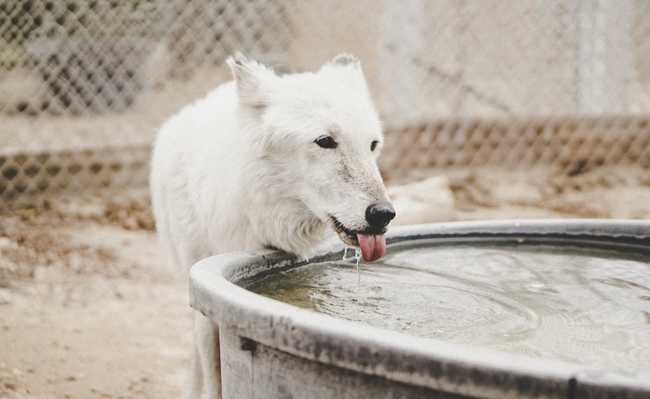Understand the nitrogen cycle
Among the biogeochemical cycles, nitrogen is the most widely studied. Check a summary and know its importance

Nitrogen is an essential chemical element for the existence of life on Earth, as it is a component of all the amino acids in our body, in addition to nitrogenous bases (which make up DNA and RNA molecules). Approximately 78% of the air we breathe is composed of atmospheric nitrogen (N 2 ), which is its largest reservoir. One of the reasons for this is that N 2 is the inert form of nitrogen, that is, it is a gas that, in common situations, is not reactive. Thus, it has been accumulating in the atmosphere since the formation of the planet. Despite this, few living beings are able to absorb it in its molecular form (N 2 ). It turns out that nitrogen, like iron and sulfur, participates in a natural cycle during which its chemical structure undergoes transformations in each of the stages, serving as a basis for other reactions and thus becoming available to other organisms - this is the great importance of the nitrogen cycle (or "nitrogen cycle").
For atmospheric N 2 to reach the soil, entering the ecosystem, it must go through a process called fixation, which is carried out by small groups of nitrifying bacteria, which remove nitrogen in the form of N 2 and incorporate it into their organic molecules. When fixation is performed by living organisms such as bacteria, it is called biological fixation, or biofixation. Currently, it is also possible to use commercial fertilizers for nitrogen fixation, characterizing industrial fixation, a method widely used in agriculture. In addition to these, there is also physical fixation, which is carried out by lightning and electrical sparks, through which nitrogen is oxidized and carried to the soil through rainfall, but this method has a reduced nitrogen fixation capacity, which is not sufficient for organisms and life on Earth to sustain themselves.
Bacteria, when fixing N 2 , release ammonia (NH 3 ). Ammonia, when in contact with soil water molecules, forms ammonium hydroxide which, when ionized, produces ammonium (NH 4 ), in a process that is part of the nitrogen cycle and is called ammonification. In nature, there is a balance between ammonia and ammonia, which is regulated by pH. In environments where the pH is more acidic, the formation of NH 4 predominates, and in more basic environments, the most common process is the formation of NH 3 . This ammonium tends to be absorbed and used mainly by plants that have bacteria associated with their roots (bacteriorizates). When produced by free-living bacteria, this ammonium tends to be available in the soil for use by other bacteria (nitrobacteria).
Nitrobacteria are chemosynthetics, that is, they are autotrophic beings (that produce their own food), which extract the energy necessary for their survival from chemical reactions. To obtain this energy, they tend to oxidize the ammonium, transforming it into nitrite (NO 2 - ), and later into nitrate (NO 3 - ). This process of the nitrogen cycle is called nitrification.
Nitrate remains free in the soil, and has no tendency to accumulate in naturally intact environments, meaning it can take three different paths: be absorbed by plants, be denitrified, or reach water bodies. Both denitrification and the flux of nitrate to water bodies have negative consequences for the environment.
Impacts on the environment
Denitrification (or denitrification) is a process carried out by bacteria called denitrifiers, which transform nitrate into N 2 again, returning the nitrogen to the atmosphere. In addition to N 2 , other gases that can be produced are nitric oxide (NO), which combines with atmospheric oxygen, favoring the formation of acid rain, and nitrous oxide (N 2 O), which is an important causative gas greenhouse effect, which aggravates global warming.
The third path, which is the one in which nitrate reaches water bodies, causes an environmental problem called eutrophication. This process is characterized by an increase in the concentration of nutrients (mainly nitrogen compounds and phosphorus) in the waters of a lake or dam. This excess of nutrients favors the accelerated multiplication of algae, which ends up hindering the passage of light, unbalancing the aquatic environment. Another way to provide this excess of nutrients in an aquatic environment is to release sewage into it without adequate treatment.
Another issue to be considered is the fact that nitrogen can also be harmful to plants when present in amounts that go beyond their assimilation capabilities. Thus, an excess of nitrogen fixed in the soil can limit plant growth, harming crops. Thus, the carbon/nitrogen ratio must also be considered in composting processes, so that the metabolisms of the colonies of microorganisms involved in the decomposition process are always active.
Uptake of nitrogen by humans
Humans and other animals have access to nitrate through ingestion of plants that absorbed this substance or, according to the food chain, through ingestion of other animals that fed on these plants. This nitrate returns to the cycle after the death of an organism (organic matter) or through excretion (of urea or uric acid, in most land animals, and ammonia, in fish excreta) which contains nitrogenous compounds. Thus, decomposing bacteria will act on organic matter releasing ammonia. Ammonia can also be transformed into nitrites and nitrates by the same nitrobacteria that transform ammonia, integrating into the cycle.
An alternative to fertilizers
As we have seen, the fixation of nitrogen in the soil can have positive effects, but the process occurs in excess, it can have negative consequences for the environment. Humanity's interference in the nitrogen cycle occurs through industrial fixation (through the use of fertilizers), which increases the concentration of nitrogen to be fixed, causing problems such as those mentioned above.
An alternative to the use of fertilizers would be crop rotation, alternating cultures of nitrogen-fixing and non-nitrogen-fixing plants. Nitrogen-fixing plants are those that have bacteria and other fixing organisms associated with their roots, as occurs in leguminous plants (such as beans and soybeans). Rotation would favor the fixation of nitrogen in safer amounts than the use of fertilizers, providing nutrients compatible with the plants' assimilation capacity, favoring their development and reducing the levels of nutrients that reach the water bodies. A similar process called "green manure" can also be used in place of fertilizers.
This process consists of cultivating nitrogen-fixing plants and mowing them before they produce seeds, leaving them in place as mulch, so that later cultures of other species can be made. Just below we can check an image that brings us a summary of what was seen throughout the article:

ANAMMOX
The acronym in English (which means anaerobic oxidation of ammonia) names an innovative biological process for removing ammonia from water and gases.
It is a shortcut, as ammonia would not need to be nitrified to nitrite and nitrate to be denitrified back to the N 2 form. With the ANAMMOX process, ammonia would be directly reconverted to nitrogen gas (N 2 ). The first large-scale station was installed in 2002 in the Netherlands, and by 2012, there were already 11 facilities in operation.
Efficient and sustainable, the ANAMMOX process can be used to remove ammonia in effluents in concentrations greater than 100 mg/l. Inside the reactors, nitrifying bacteria and ANAMMOX coexist, where the former transform about half of the ammonia into nitrides (chemical compounds that have nitrogen in their composition), and the ANAMMOX bacteria act by transforming nitrides and ammonia into nitrogen gas.

The anaerobic oxidation of ammonia has been shown to be promising, and can already be found in industrial processes such as wastewater treatment, organic solid waste, in food and fertilizer industries, among others.










